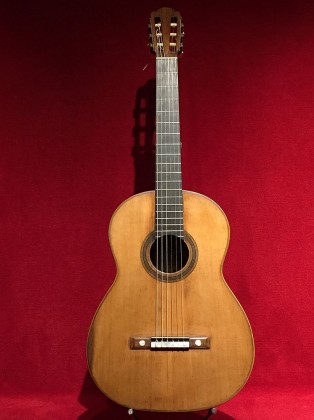Do you know how the Tarrega’s guitar was?
Since Antonio Torres established his innovations in Spanish guitars, they have undergone several evolutions to increase their performance, just as it has happened with the strings.
Previously, we talked about the strings which are used on guitars today, but it is very important to know how the evolution of both, strings and guitars, has taken place in order to understand what we can find today.
As it has been explained in the previous post, in the past, guitarists used very different strings from those we know today. The strings used until the mid-twentieth century were made of guts for the trebles strings (the first three thinner strings) and of silk for the bass strings (the three thicker strings).
They were called ‘catgut strings’, but they were not made of cat really, they were usually made of pork belly.
Regarding the instrument, Antonio Torres (1817-1892) conformed the canons of today's guitar, which has not stopped evolving. Torres was the responsible for establishing the bars structure of the cover as well as increasing the size of the soundboard.
In addition, he took charge of differentiating the manufacture of classical and flamenco guitars. These facts are important differences to interpret in the best way the two musical styles.
In fact, the guitar has continued to evolve, especially the classical one, increasing the size of the soundboard in order to enhance its volume and sound projection. The introduction of new types of wood in the manufacturing process has also been crucial. In the case of Guitarras Alhambra, we must highlight the Luthier Aniversario model, in which the sides and back are made of ziricote.
In the past, the features of the materials used on the strings forced the interpreter to be more dedicated to the instrument, which adding the different features of the instrument (a smaller soundboard), defined the Spanish guitar as a close instrument which was oriented to small-sized rooms.
A clear example is the case of Francisco Tarrega (1852-1909), a worldwide recognized guitarist and composer, who played in small rooms, where the delicate sound of the guitar could be appreciated.
Nowadays, there are cases such as Carles Trepat, who uses a restored Torres guitar in his concerts, along with catgut and silk strings. According to this great performer, some flamenco guitars of the twentieth century still maintain the essence of those Torres guitars, thanks to its manufacture.
For this kind of guitar the use of amplifying elements is essential, which is a very important issue that we’ll also talk.



